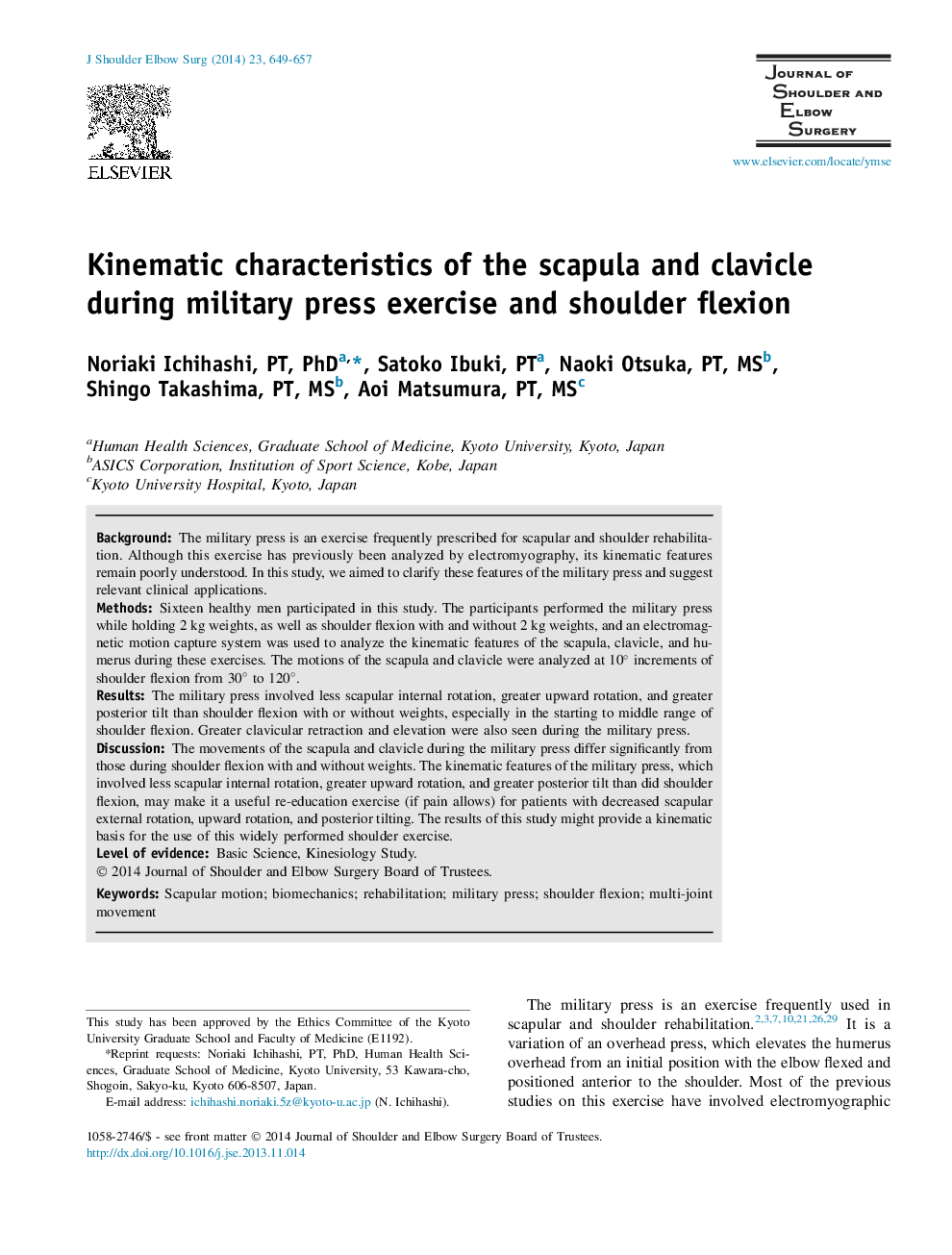| کد مقاله | کد نشریه | سال انتشار | مقاله انگلیسی | نسخه تمام متن |
|---|---|---|---|---|
| 4074425 | 1267009 | 2014 | 9 صفحه PDF | دانلود رایگان |
BackgroundThe military press is an exercise frequently prescribed for scapular and shoulder rehabilitation. Although this exercise has previously been analyzed by electromyography, its kinematic features remain poorly understood. In this study, we aimed to clarify these features of the military press and suggest relevant clinical applications.MethodsSixteen healthy men participated in this study. The participants performed the military press while holding 2 kg weights, as well as shoulder flexion with and without 2 kg weights, and an electromagnetic motion capture system was used to analyze the kinematic features of the scapula, clavicle, and humerus during these exercises. The motions of the scapula and clavicle were analyzed at 10° increments of shoulder flexion from 30° to 120°.ResultsThe military press involved less scapular internal rotation, greater upward rotation, and greater posterior tilt than shoulder flexion with or without weights, especially in the starting to middle range of shoulder flexion. Greater clavicular retraction and elevation were also seen during the military press.DiscussionThe movements of the scapula and clavicle during the military press differ significantly from those during shoulder flexion with and without weights. The kinematic features of the military press, which involved less scapular internal rotation, greater upward rotation, and greater posterior tilt than did shoulder flexion, may make it a useful re-education exercise (if pain allows) for patients with decreased scapular external rotation, upward rotation, and posterior tilting. The results of this study might provide a kinematic basis for the use of this widely performed shoulder exercise.
Journal: Journal of Shoulder and Elbow Surgery - Volume 23, Issue 5, May 2014, Pages 649–657
